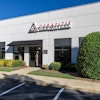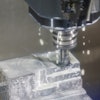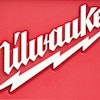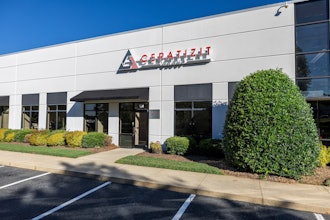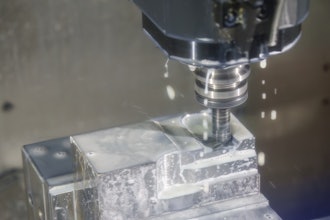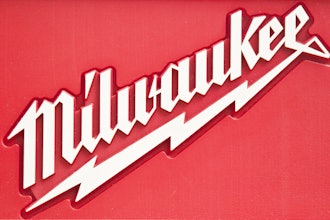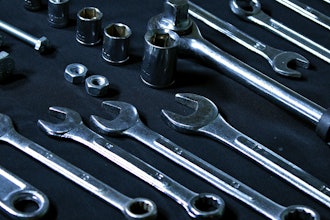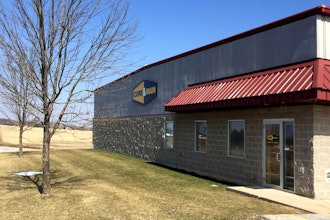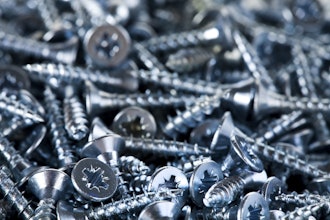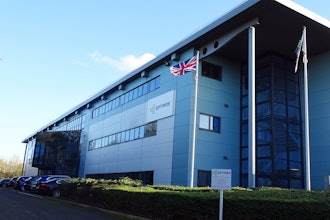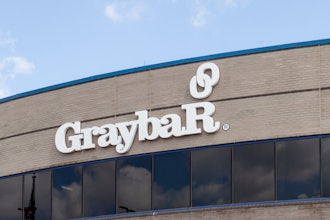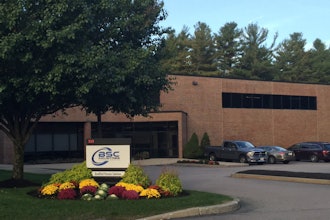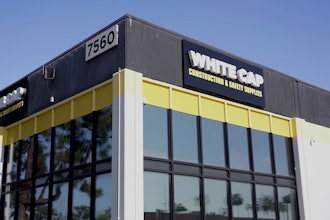1Understanding Harmonic
Distortion and how it relates
to Variable Frequency Drives
Definitions
• Variable Frequency Drives (VFDs); sometimes
referred to as “variable speed drives.”
• Harmonic Distortion is a measure of the amount
of deviation from a pure sinusoidal wave form
that can be caused by a non-linear load (a VFD is
considered a non-linear load because it only
draws current from the power line as required).
• Distorted Waveform = fundamental (60Hz
sinusoidal waveform) + multiples of the
fundamental frequency, typically the 5th, 7th,
11th, 13th, and 17th, etc. (e.g. 5 x 60Hz = 300Hz,
7 x 60Hz = 420Hz, etc.)
• Voltage Distortion is the deviation in the supplied
voltage from a pure sinusoidal waveform.
• Current Distortion is the deviation in current
drawn by a non-linear load from a purely
sinusoidal waveform.
• Pulse Width Modulation (PWM) is a means by
which nearly sinusoidal current can be caused
to flow in a motor, at a desired frequency (40,
50, 60Hz for example), by sinusoidally varying
the pulse width of a much higher frequency
squarewave.
• Point of Common Coupling (PCC): A connection
point in a power system where it is important and
desirable to control the level of harmonic content
and/or voltage distortion (deviation from a pure
sinewave).
• Total Demand Distortion (TDD) is the ratio
between the RMS sum of all the harmonic currents
drawn and (divided by) the total fundamental
current (at 60Hz in N.A.) at a point of common
coupling (over a 15 or 30 minute period).
continues on page 3...
Active Front End
2
Unidrive M700
Key Features
• Static and rotational auto tune
• 8 preset speeds; 8 sets of accel /
decel rates
• Catch spinning motor function
• Built-in PID
• Energy savings mode
• Power metering
• Network connectivity
• Easy-to-use, plain text LCD key-
pad
• 3 option slots for other commu-
nication options and/or for I/O
expansion
• SmartCard for parameter cloning
• FREE energy saving software and
drive setup tools
Active Front End Benefits
Low Harmonic Distortion
• IEEE519-2014 harmonic
compli ance at the drive input
terminals
• Won’t interfere with sensitive
equipment
• Not sensitive to line imbalances
• Superior to 12- and 18-pulse
solutions
• Maintains Unity Power Factor
Easy Installation
• Available up to 2,000 hp at 460 V
• Single package – no need for
external filters or transformers
• UL508A approved
• 100 kA SCCR ratings
Flexible Solutions
• Wide range of I/O and communi-
cations option modules including
LonWorks
• Electronic bypass three contactor
and soft start option
Designed to meet the
demand for clean power,
Control Techniques
offers the latest in both
microprocessor and power
semiconductor technology
to provide the industry
with economical, compact
and highly flexible active
front end packaged drive
solutions.
These packages integrate
Control Techniques’
Unidrive M Active Front End
controller and EMC filtering
for high performance with
extremely low harmonic
distortion.
Clean, efficient and reliable motor control
with low harmonic distortion.
3Active Front End
Harmonic Reduction Technologies
The first stage of a PWM VFD (the rectifier) creates distortion
of the AC line as the rectifier charges a capacitor bank called
the DC bus. Current is drawn from the AC line only when
the rectified voltage exceeds the voltage level to which the
capacitor is charged. Severe harmonic distortion can have
several detrimental effects. Over the years, several standards
have been adopted to address these potential effects in
terms of recommendations for maximum allowable levels
of distortion. One such standard cited frequently in North
America is IEEE-519.
Rectifier DC Bus Inverter
Figure 1 – Typical PWM VFD
IEEE-519 Standard
ANSI/IEEE Standard 519, IEEE Guide for Harmonic Control
and Reactive Compensation of Static Power Converters,
was published in 1981. It recommended maximum levels of
total-harmonic-voltage-distortion (THDV) at the point that the
utility connects to different types of users (point of common
coupling, or PCC), shown in Figure 2. Different maximum
levels were provided for different types of buildings
(see Figure 3).
Other
Loads
Drive 1
Drive 2
Drive 3
Drive n
PCC
Panel
Grid
Transformer
ih ih
ih
ih
ih
Cable Cable
Figure 2 – Point of Common Coupling
THDV Level Sensitive Applications
3%
Airports
Hospitals
Telephone companies
THDV Level General Applications
5%
Office buildings
Schools
THDV Level Dedicated Systems
10% Factories
Figure 3
Rectified AC
Rectified Voltage
Peak
DC Bus
DC Bus
Current
Figure 4
Current only flows when the rectified voltage exceeds the
voltage that the capacitor is charged to. Current Flow
thus becomes “non-linear” (not sinusoidal).
Voltage distortion created by VFDs can cause “flat-
topping” of power-system voltage waveforms which, in turn,
can cause sensitive electronic equipment to malfunction. The
area between the two waveforms shown in Figure 5 is the
actual level of distortion and is expressed as a percent of the
fundamental pure 60Hz waveform.
Distortion
Distortion
Figure 5 – “Flat-topped” power-system voltage waveform
Active Front End
4
The location of the PCC was explicitly established so
that all users of a given PCC are aware that they must
all work together to ensure that limits are met.
IEEE-519 Compliance
IEEE Standard 519 states, “Within an industrial
plant, the PCC is the point between the nonlinear
load and other loads.” This statement has been
widely misunderstood and misused. Some consulting
engineers have interpreted this to mean that the current
distortion is to be measured at the VFD input-power
connections, a total misunderstanding of the purpose
behind this standard and use of it. The drive itself is the
only component in the entire electrical system that will
see the level of distortion (measured at the drive input
terminals). Main tain ing some level of current distortion
at the input of the drive will not guarantee any level
anywhere else in the building. This misapplication of the
standard has led to use of costly and energy-consuming
reactors, passive filters, multi-pulse drives and active
filters that are in many cases unnecessary. Because these
devices can increase the initial cost of the drives by as
much as 500%, it is important to understand the intent
and purpose of this standard and use it accordingly.
A variety of information is required to determine
whether or not any form of harmonic mitigation is
necessary to comply with a recommended level of
distortion as defined by IEEE-519:
• The transformer feeding the building must be defined
(KVA and % impedance). The larger the transformer,
the “stiffer” the power line resulting in lower levels of
harmonic distortion.
• The total number of drives and their cumulative
horsepower must be defined. A few small drives on
a very large transformer will have very little effect.
• The amount of non-linear load (drives) versus
the building’s linear load will, to a large degree,
determine the total amount of current distortion thus
determining if the drives are a big or small percentage
of the load on the transformer.
Using this information, an estimate of the current
and voltage distortion can be made. More accurate
calculations can be made if additional information is
available such as existing harmonic distortion levels and
wire lengths/sizes between the drives and the PCC. As
a rule of thumb, unless the drives constitute more than
30% of the load on the main distribution transformer
from which they receive power, there is little need
IEEE-519 was revised in 1992 to provide recommendations
on maximum allowable levels of harmonic current distortion
(see Figure 6). The new standard also defined the maximum
recommended contribution of any individual harmonic.
The amount of allowable distortion is based on a ratio of the
short circuit current available to the distribution system (ISC –
maximum short circuit current available at point of common
coupling), and the maximum load current recognized by the
distribution system (Il – the maximum load current at the
point of common coupling). Basically, a large transformer
feeding a building will have more short circuit current
available and the ratio becomes larger allowing for a higher
level of harmonics.
Figure 6 - IEEE-519 recommended
maximum individual current harmonics
Also introduced by IEEE-519-1992 is the term “Total
Demand Distortion” (TDD) which provides recommendations
for maximum total current distortion (contribution by all
individual harmonics) as a percent of the total demand load
current during a 15 or 30 minute demand (see Figure 7).
Again the TDD is referenced to the ratio of the load current
to the short circuit current available.
The key issue with current distortion is that it creates
voltage distortion. However, current distortion can also
create increased audible noise as well as additional heating
|of distribution transformers and the cables providing power
to the equipment generating the harmonics.
IEEE-519 was subsequently revised in 2014 to provide
additional clarity on the Point of Common Coupling (PCC).
Frequently for industrial users (i.e., manufacturing plants) the
PCC is located at the high voltage (HV) side of a dedicated
transformer. For commercial users (office parks, shopping
malls, etc.) the PCC is located at the low voltage (LV) side
of a common service transformer.
ISC/II h < 11 11 ≤ h < 17 17 ≤ h < 23 23 ≤ h < 35 35 ≤ h
< 20 4.0 2.0 1.5 0.6 0.3
20 - 50 7.0 3.5 2.5 1.0 0.5
50 - 100 10.0 4.5 4.0 1.5 1.0
100 - 1000 12.0 5.5 5.0 2.0 1.0
> 1000 15.0 7.0 5.0 2.0 1.0
ISC/II Total Demand Distortion (TDD)
< 20 5.0
20 - 50 8.0
50 - 100 12.0
100 - 1000 15.0
> 1000 20.0
Figure 7 - IEEE-519 Total Current Demand Distortion
5Active Front End
AC line reactors have the dual benefit of convenience
and providing additional attenuation of AC power supply
disturbances such as surges or poor phase balance. They
do however cause a reduction in DC link voltage so they
can create voltage drop issues. An oversized AC line reactor
with a low line voltage can create enough of a voltage drop
that not enough output voltage can be created to provide
full motor torque and horsepower.
As a general rule, the total AC reactance should not exceed
5%. This is sufficient to meet the harmonic levels required
by international standard IEC-61000-3-12 for a balanced
3 phase rectifier with Rsce (the ratio of the drive-rated
current-to-supply fault level at the point of common
coupling with other supply users) greater than or equal to
120 (i.e. primarily a 5th harmonic not exceeding 40% and
a THD not exceeding 48%).
DC Link Chokes
DC link chokes can be used individually (typically on the
positive DC bus) or in pairs with one each on the positive
and negative bus. When two DC reactors are used on the
bus, the inductance is additive. Equivalent impedances can
be achieved using either one larger reactor on the positive
or negative bus or two smaller reactors on both the positive
and negative bus.
A key advantage of DC link inductors is the minimal
drop in DC voltage with increasing load. For reactance
values on the order of 4%, the benefit for harmonics is
similar to that of the AC reactor but with slightly greater
benefit for the lower order harmonics such as the 5th.
However, the benefit is subject to diminishing returns since
the harmonics can never be reduced below the levels for an
infinite inductance (e.g. 20% for the 5th harmonic) and in
practice, the 5th harmonic is unlikely to be reduced cost-
effectively to below 30%.
to be concerned about harmonics and standard 6-pulse
drives should be sufficient. In most industrial applicaitons,
the fan and pump drives being used are not more than 30%
of the total load. If any doubt remains, however, a harmonic
analysis of a given installation should be performed.
Harmonic Mitigation Techniques for AC Drives
If harmonics are higher than desired after performing an
analysis, there are a number of ways to mitigate the
harmonic distortion. Harmonics are caused by the first stage
of a VFD (the rectifier). The distortion of input current
feeding this rectifier on a standard (6-pulse) VFD ranges
between 70-100%.
Reactors
AC line reactors (see Figure 8) and DC link chokes
(reactors) will make the current drawn from the power line
more sinusoidal (see Figure 9). With an AC line reactor or DC
link choke, the distortion of the input current will typically
be 30-40% compared to the 70-100% of a drive with no
reactor. Reactors will increase the initial cost of the drive 10-
20% and are included as standard in many drives
5 horsepower and larger.
Blue- standard 6 pulse, Red-6 pulse with AC
reactor or DC link choke, Green – pure
sinusoidal current flow
Figure 9
Figure 8
Figure 10
Ideal No Reactor With Reactor
DC
inductors
AC line
reactor
Active Front End
6
The disadvantage of DC inductors is that the rectifier
becomes more susceptible to the effects of supply surges
and poor balance and must therefore be equipped with
adequate surge suppression. To avoid undue sensitivity
to supply unbalance, it is important to choose inductor
values such that the inherent resonant frequencies with
the DC capacitors do not coincide with the characteristic
frequencies of an unbalanced supply.
Used alone, DC inductors do not reduce the high-order
harmonics significantly and may even increase them. For
this reason it may be desirable to use standard AC reactors.
The use of Control Techniques VFDs with AC line
reactors and DC link chokes varies based on the drive’s
horsepower and voltage ratings. Drives smaller than 5
horsepower have neither AC line reactors or DC link chokes
since their harmonic impact is normally negligible. The
equivalent impedance of the reactors used on larger drives
will vary as well based on horsepower and voltage with
an average of approximately 5%. Midsize drives (greater
than 5 horsepower and smaller than 100 horsepower) will
use DC link chokes (either one on the positive leg or one
on both the positive and negative leg). Larger drives (100
horsepower and larger) will use AC line reactors.
Multi-Pulse Drives (12 and 18-Pulse)
An additional method of mitigating harmonics is the use
of 12-pulse drives (see Figure 11) and 18-pulse drives (see
Figure 12). These drives contain multiple rectifiers as well
as an expensive transformer with one primary and multiple
secondary. These configurations act to cancel some of the
lower level, higher amplitude harmonic currents.
includes transformer (1 primary, 2 secondaries)
and 2 input bridges and balancing reactors
Includes transformer (1 primary, 3 secondaries)
and 3 input bridges and balancing reactors
Refer to Figure 13. Current distortion at the input
terminals is approximately 10% for 12-pulse drives; 5%
for 18-pulse drives.
These technologies have several drawbacks:
• Initial cost of a 12-pulse drive is approximately 400%
higher than a standard 6-pulse drive (500% higher for
18-pulse drive)
• Input power lines must be very well balanced (1% or
better); even a slight imbalance of 3% will negate nearly
all of the harmonics mitigation.
• Physical size – extra bridges and custom transformers
increase size requirements
• Higher operating losses create lower efficiencies
Figure 13
Figure 11 - 12-pulse rectifier
Figure 12 - 18-pulse rectifier
12-pulse input current
18-pulse input current
+20°
-20°
0°
INVERTER
STANDARD AC DRIVE
INVERTER
7Active Front End
Figure 16 - active front end
Figure 14 - active filter
Figure 15 - passive filter
Passive Filters
Refer to Figure 14. Passive filters comprised of a tuned
configuration of capacitors, inductors and in some cases
resistors, are sometimes used to eliminate specific harmonics
(typically the 5th, 7th, etc.). Depending on the level of
mitigation, use of passive filters increases the total cost of the
installed drives by 200-500%. These filters are slightly more
tolerant of line imbalances but also have losses associated
with using them.
Active Harmonic Filter and Active Front End
Newer technologies are the active harmonic filter (AHF)
and the active front end (AFE) VFD. A single AHF can filter the
harmonics of several VFDs or an entire facility. The AHF is in
parallel with the other loads and only handles the corrective
harmonics required to offset those generated by the non-
linear loads. The current distortion at the input of the filter
will be less than 4% and these filters are relatively unaffected
by line imbalances.
The AFE is really a combination of two inverters. One
inverter powers the motor and the other actively draws
power from the line. The AFE handles both the fundamental
current and the harmonic currents created by the load.
Both techniques act like active audible noise reduction
techniques. If a 5th harmonic is detected, a harmonic of
equal and opposite amplitude is generated that effectively
eliminates the 5th harmonic. These techniques, while still
costing as much as an 18-pulse drive, have the most promise
to become lower in cost.
Summary
When choosing VFDs, it is important to properly
compare and analyze drive manufacturers’ products
including a complete harmonic analysis based on individual
drive sizes and quantities being used and the system
to which they are connected. While one manufacturer’s
products may have better performance at a given frame
size, the aggregate performance of all the sizes and
quantities of drives being used on any individual project
may indicate another manufacturer’s products are the
better choice.
The easy-to-use
keypad can be
customized to display
parameters using your
terminology, in any of
five languages.
75 hp AFE system with
Unidrive M700
Active
Harmonic
Filter
Active filter reduces
the source current distortion
to less than 5% THID.
Active filter supplies only
the distortion current demanded
by non-linear loads.
Non-linear loads draw
distorted current
Current
sensing
C/T
L L
Line
inverter
(rectifier)
Inductor-capacitor-inductor
(LCL) filter
Motor
inverter
www.controltechniques.com
Connect with us at:
twitter.com/Nidec_CT
facebook.com/NidecControlTechniques
youtube.com/c/NidecControlTechniques
linkedin.com/company/17944319
theautomationengineer.com (blog)
© 2017 Nidec Industrial Automation USA, LLC. The information contained in this brochure is
for guidance only and does not form part of any contract. The accuracy cannot be guaranteed
as Nidec Industrial Automation USA, LLC have an ongoing process of development and reserve
the right to change the specification of their products without notice.
Nidec Industrial Automation USA, LLC. Registered Office: 7078 Shady Oak Road Eden Prairie,
MN 55344-3505 USA.
P.N. WHP-HARMONIC-VFD 11/17
Understanding Harmonic Distortion and how it relates to Variable Frequency Drives
Designed to meet the demand for clean power, Control Techniques offers the latest in both microprocessor and power semiconductor technology to provide the industry with economical, compact and highly flexible active front end packaged drive solutions.
Latest in Home
Cutting Tool Maker Opens New North American Headquarters
September 12, 2025
Metalworking Machinery Orders Up More than 20% in July
September 11, 2025
Milwaukee Tool Announces $42M Expansion in Wisconsin
September 11, 2025

